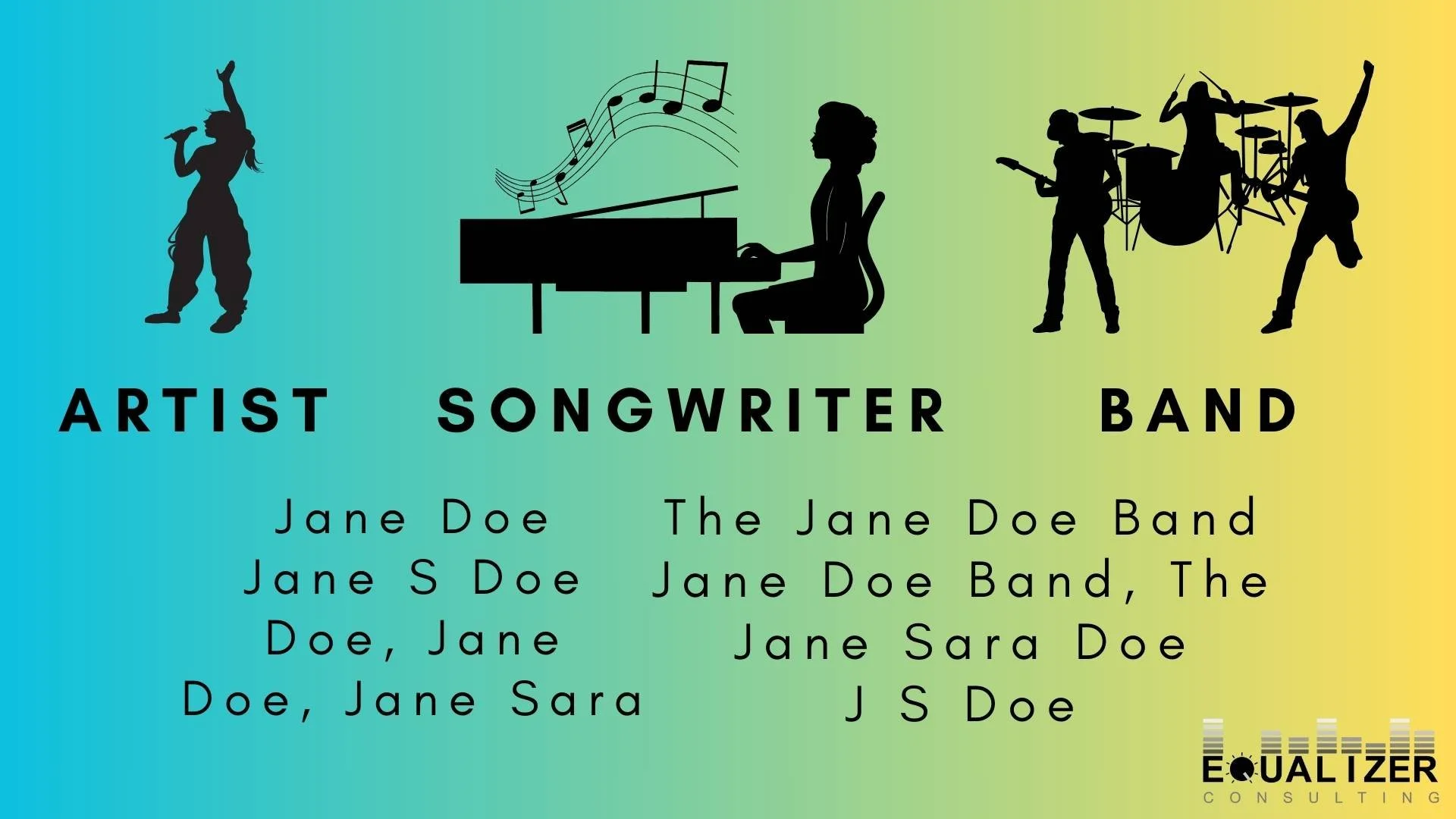What’s In A Name?
Unlike in industries where legal name is the norm, the party or person identifier can be complex in the music space. Artists often don't use legal names, a songwriter may write under their own name as well as a pseudonym, an individual might also be part of a band, and so on.
In that, name alone may not be enough to clearly identify a person, so let's look at two standard data identifiers for names in music.
ISNI: International Standard Name Identifier - An ISO-certified global standard 16-digit number that identifies individual writers, artists, performers, and creators. Utilizing unique data elements attached to a "person" (such as birthdate and place of birth), can disambiguate where name alone isn't enough. In the case of pseudonyms, distinct ISNIs can be allocated for each public identity, and then linked together, if authorized by that individual. ISNI allocation is still optional but is being more broadly adopted.
IPI: Interested Party Information - A unique number assigned to songwriters and publishers by their collecting society (PRO, CMO, etc.) on behalf of the International Confederation of Societies of Authors and Composers (CISAC). Usually, between 9 and 11 digits long, it links the parties to their applicable musical works. In the case of pseudonyms, distinct IPIs can be allocated for each public identity and linked together.
This seems simple enough - identifiers exist! In reality, only one of them (IPI) is the industry norm, and most of the time they don't travel together.
My former colleague, Greg Borax CSM, CSPO, CAL, who facilitated early adoption of the ISNI standard for artists, notes:
It's been about 30 years since the industry adopted the ISRC standard for sound recordings and music videos. ISNI is an emerging standard over the past 10 years, but the true value won't be recognized until all music companies, especially the majors, all adopt it.
In the best-case scenario, a contributor has obtained both an ISNI and an IPI. All companies along the chain (label, distributor, DSP, etc.) still need to capture those data elements together and verify they are assigned to the correct individual/s. The same goes for accurately linking ISNIs and IPIs to any known pseudonyms within their databases.
Unique identifiers ensure all variations are properly credited to the correct person.
Why is it important?
As outlined previously in this blog, it's a detective game when label copy (core metadata for the music release) is missing legal names, only contains initials, and potentially has some "unknowns" tucked in for good measure. Having to sleuth will only lead to delays and inaccuracies.
Quite simply, if you are a contributor to a musical work or recording, you want to make sure you're getting credited and paid accordingly. Ideally, your "person" metadata needs to be established and tracked from the very beginning of creation (read: in the studio) which not only speeds up the process of getting credits and royalties matched and assigned, but also safeguards against potential payments to the wrong party, or maybe no payments at all.
Placing importance on correct person metadata will yield:
Higher accuracy of credits to the right contributors.
Faster path to payment.
Improved analytics for performance and consumption.
Better matching of recordings to works (one of the most complex industry issues still unresolved!)
Accurate income tracking and verification.
A holistic view of assets assigned to a particular party or group of persons, which is very useful when negotiating deals, assessing catalog valuation, or handling transfers of ownership.
In summary...
By building awareness of the importance of key identifiers in the proper identification of a person, steps can be taken to ensure they are utilized to credit and pay the correct parties.
Capture all available party identifiers together (ISNI, IPI, PRO assigned codes).
Support wide-spread adoption of ISNI as a standard identifier.
Conduct IPI review to fill any gaps that exist.
Create applicable standards for how party information, and all associated names, are captured as text (e.g. Jane Doe vs Doe, Jane vs Jane Sara Doe) - bonus points if the industry at large could agree!
Don't forget to train broadly on all of the above!
If you are working with artists, songwriters, (or any other participant in the process) educate and assist them with getting their identifiers in check. Remember, the more easily they can be identified, with a high level of confidence and accuracy, the quicker they're going to get paid - and that may be all the motivation they need.


